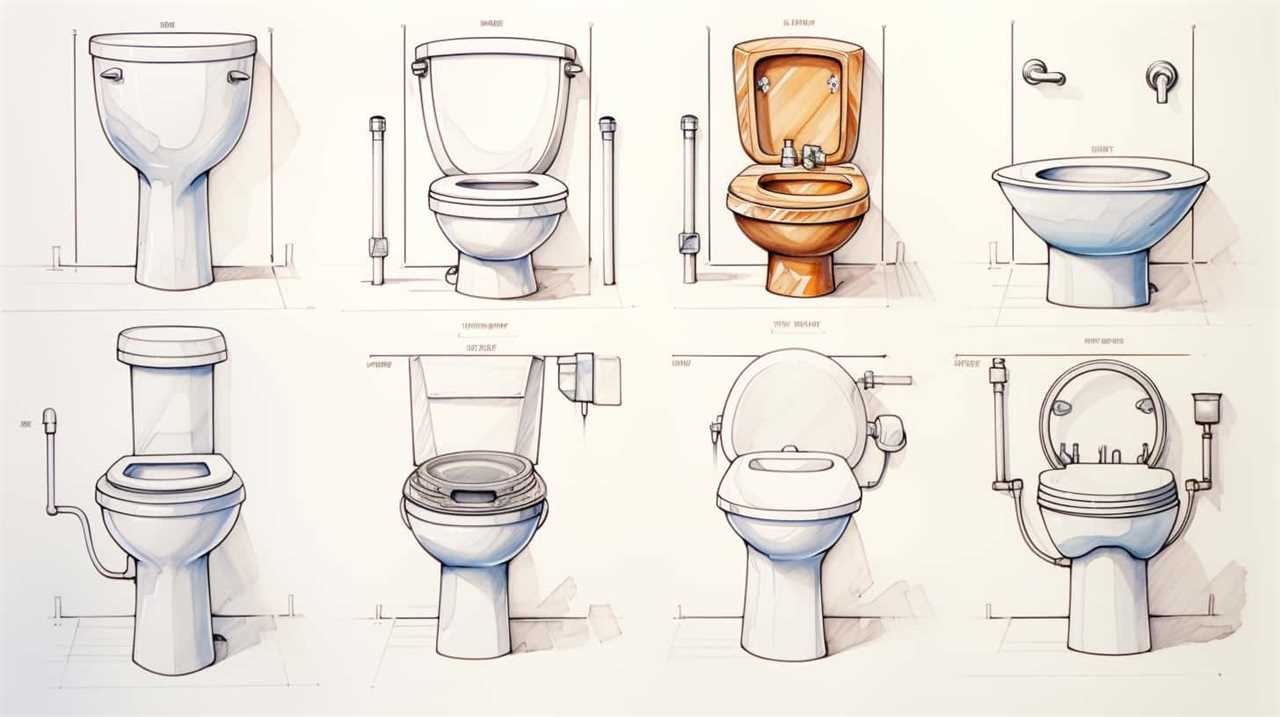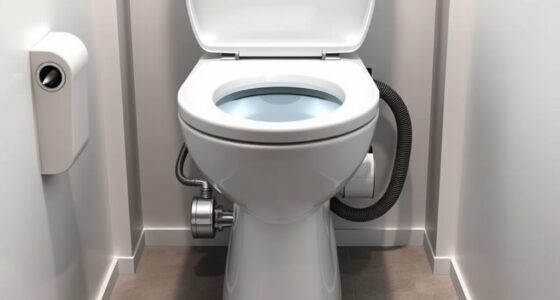Many of us have pondered: Is the use of 1.6 Gpf toilets permitted in California?
In this article, we will delve into the regulations surrounding toilet flush volume in the Golden State. Understanding the importance of Gpf and the evolution of flush volume standards is crucial to navigating the current guidelines for water-efficient toilets.
We will also explore alternatives to 1.6 Gpf toilets, providing a comprehensive guide for those seeking mastery in the realm of California’s toilet regulations.
Key Takeaways
- California’s toilet flush volume regulations limit toilet models to a maximum of 1.28 gallons per flush (gpf).
- The regulations were implemented as part of water conservation initiatives and to reduce water consumption by toilets.
- Understanding gpf and its importance is crucial for selecting water-efficient toilets.
- Toilets must meet strict performance requirements and be certified by the WaterSense program to be considered water-efficient in California.
California’s Toilet Flush Volume Regulations
California’s toilet flush volume regulations limit toilet models to a maximum of 1.28 gallons per flush. These regulations were implemented as part of water conservation initiatives to reduce the amount of water consumed by toilets. By setting a maximum flush volume, California aims to promote efficient water usage and decrease water waste.
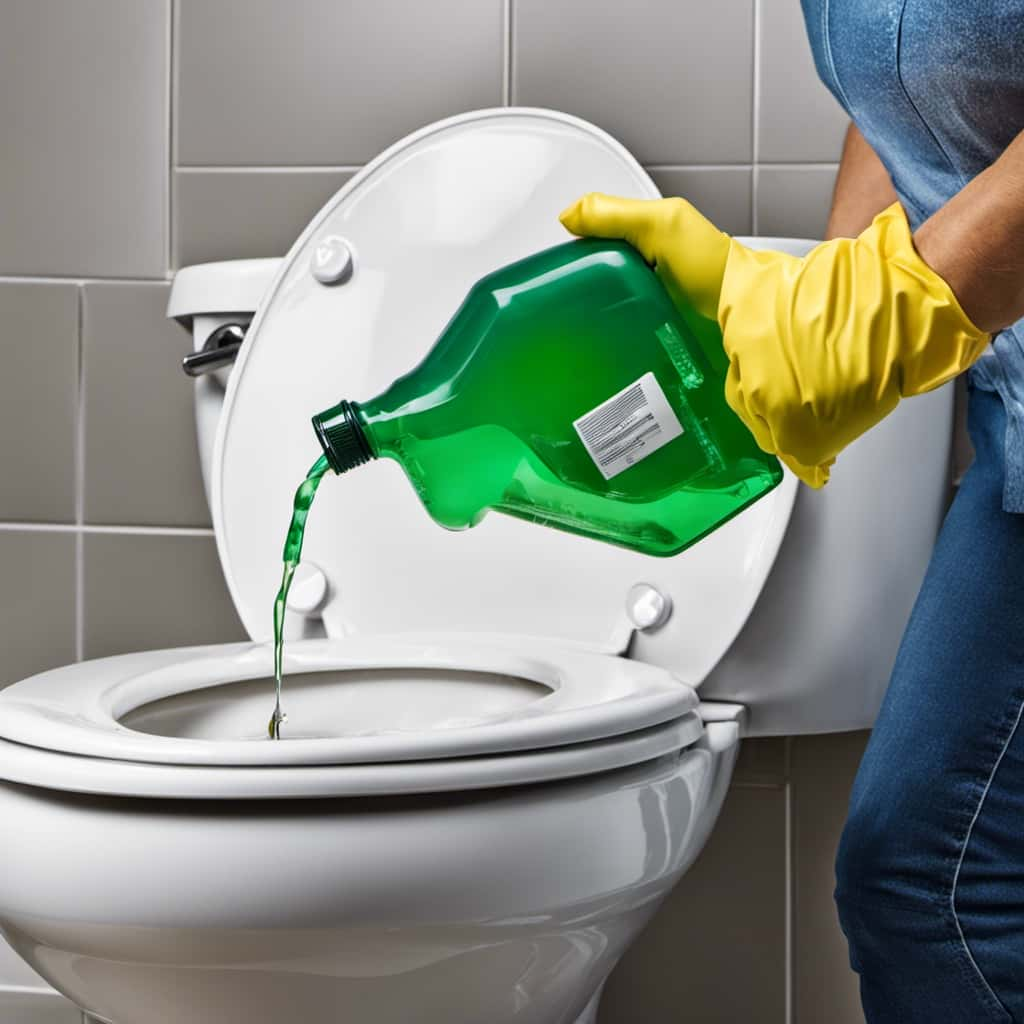
These regulations are in line with the state’s commitment to sustainable practices and environmental conservation. The goal is to encourage manufacturers to develop and market toilets that use less water without compromising performance. This is achieved through technological advancements in toilet design, such as improved flushing mechanisms and water-saving features.
The implementation of these toilet flush regulations demonstrates California’s proactive approach towards addressing water scarcity and promoting responsible water management.
Understanding Gpf and Its Importance
To understand the importance of Gpf (gallons per flush), we need to examine how it relates to water conservation efforts and toilet efficiency.
Gpf refers to the amount of water consumed by a toilet per flush. In terms of water conservation, reducing toilet water consumption is crucial as it accounts for a significant portion of overall household water usage.

By installing water-saving fixtures with lower Gpf ratings, such as high-efficiency toilets (HETs), households can significantly reduce their water consumption and contribute to environmental sustainability.
Additionally, lower Gpf toilets also promote toilet efficiency by effectively removing waste with less water. This not only saves water but also reduces the strain on water treatment facilities.
Therefore, understanding Gpf and its importance is essential for making informed choices in selecting toilets that optimize water usage and promote water conservation.
The Evolution of Toilet Flush Volume Standards
Our research on toilet flush volume standards reveals an interesting evolution throughout the years. Toilet flush efficiency and the impact of water conservation have been driving forces behind these changes.
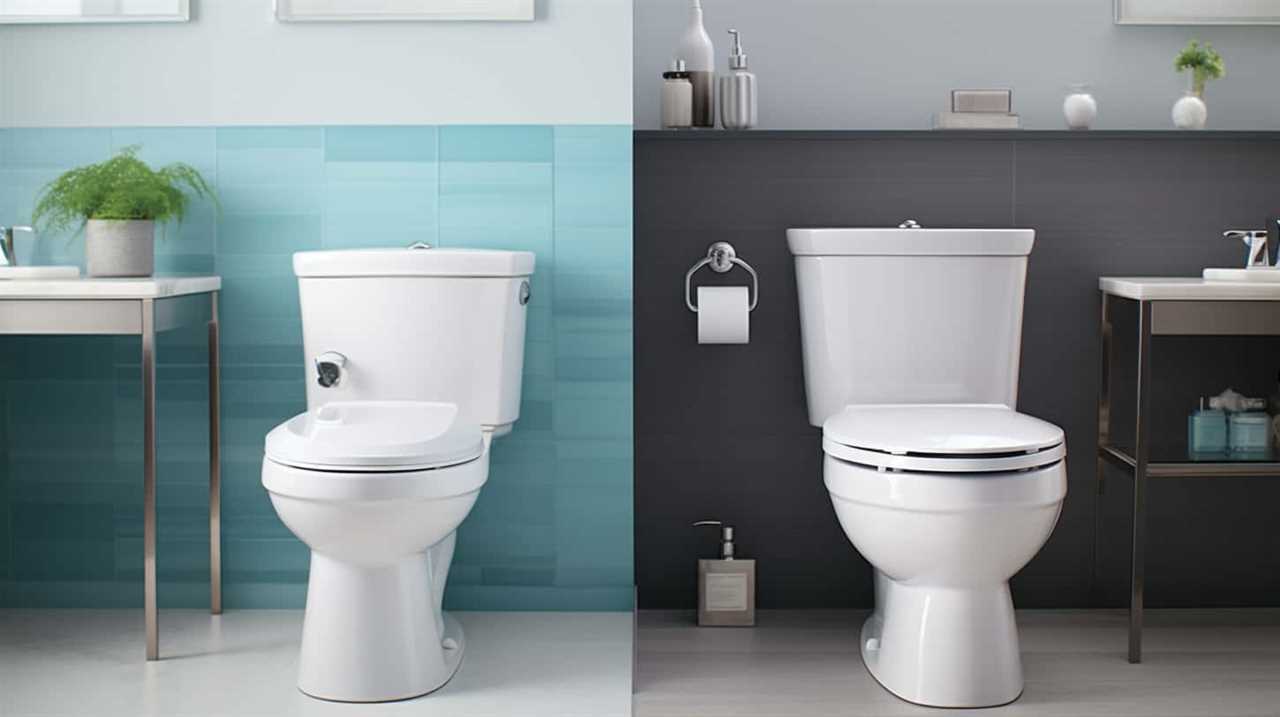
In the past, toilets used a significant amount of water per flush, resulting in wastage. However, with growing concerns about water scarcity and environmental sustainability, regulations were introduced to limit the amount of water used for each flush. This led to the development of low-flow toilets, which reduced the flush volume to 1.6 gallons per flush (gpf).
Over time, advancements in technology and engineering have allowed for even more water-efficient toilets, with some models now using as little as 1.28 gpf.
These developments in toilet flush volume standards haven’t only helped conserve water but also contributed to overall water conservation efforts.
Current Guidelines for Water-Efficient Toilets in California
As we continue our exploration of toilet flush volume standards, it’s important to understand the current guidelines for water-efficient toilets in the state of California. These guidelines have been put in place to promote toilet flush efficiency and reduce the environmental impact of water usage.
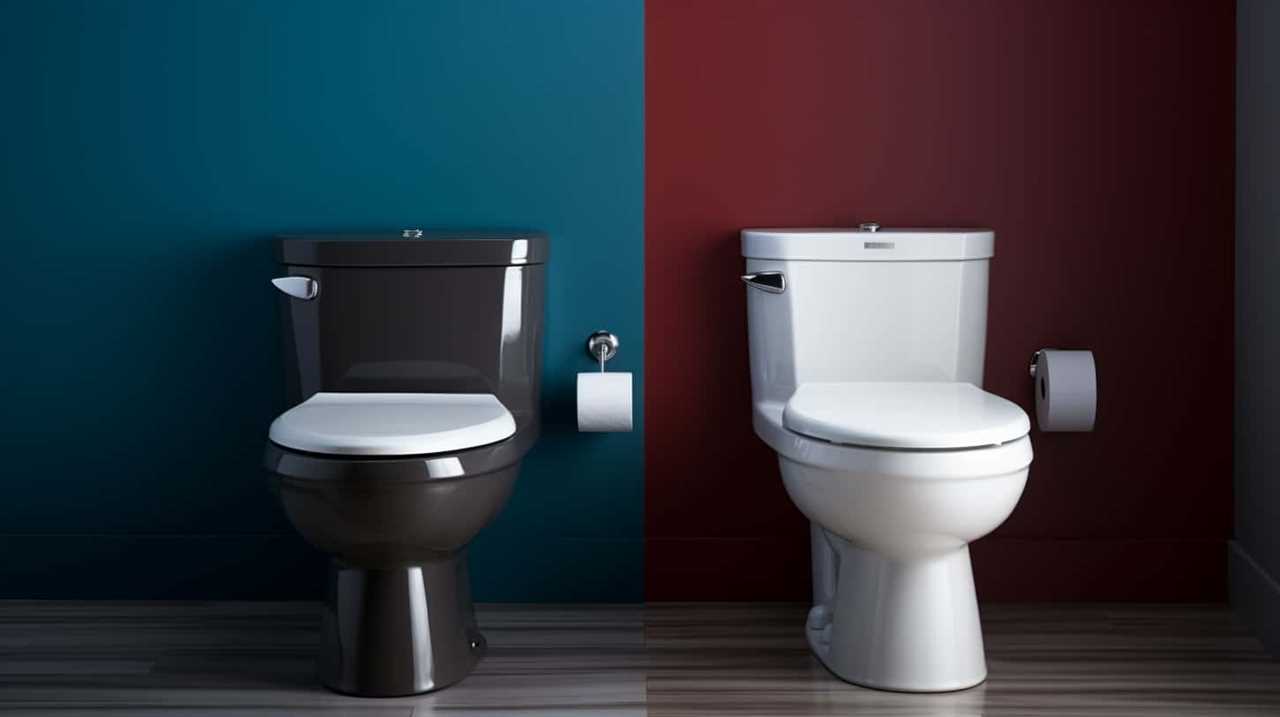
Here are the three key aspects of the current guidelines:
- Maximum Flush Volume: The maximum flush volume allowed for water-efficient toilets in California is 1.28 gallons per flush (gpf). This is significantly lower than the previous standard of 1.6 gpf.
- Performance Requirements: Water-efficient toilets must meet strict performance requirements to ensure effective waste removal with the reduced flush volume. These requirements are based on industry standards and testing protocols.
- WaterSense Certification: To qualify as water-efficient, toilets must be certified by the WaterSense program, which is a partnership between the Environmental Protection Agency (EPA) and manufacturers. WaterSense-certified toilets meet rigorous efficiency and performance criteria.
Are 1.6 Gpf Toilets Allowed in California
Yes, 1.6 Gpf toilets are allowed in California.
California has implemented strict regulations regarding water usage, and one of the measures they’ve taken is to limit toilet flush volume to 1.6 gallons per flush (Gpf) or less.
This requirement applies to both residential and commercial buildings in the state.

California Toilet Regulations
Although some states have restrictions on toilet water usage, California does allow the use of 1.6 Gpf toilets. California toilet regulations aim to promote water conservation while maintaining efficiency.
Here are three key points to understand about California toilet regulations:
- Gpf stands for Gallons per Flush, which measures the amount of water used per flush.
- California has set a maximum limit of 1.6 Gpf for toilets, ensuring water efficiency and reducing wastage.
- 1.6 Gpf toilets are widely available in the market and meet the standards set by California regulators.
Water-Saving Toilet Options
So, what water-saving toilet options are available in California that are allowed under the 1.6 Gpf regulations?
California has implemented strict regulations to promote water conservation, and as a result, water-saving toilet technology has advanced significantly. Today, there are numerous eco-friendly bathroom fixtures that meet the 1.6 Gpf requirement while still providing efficient flushing capabilities.
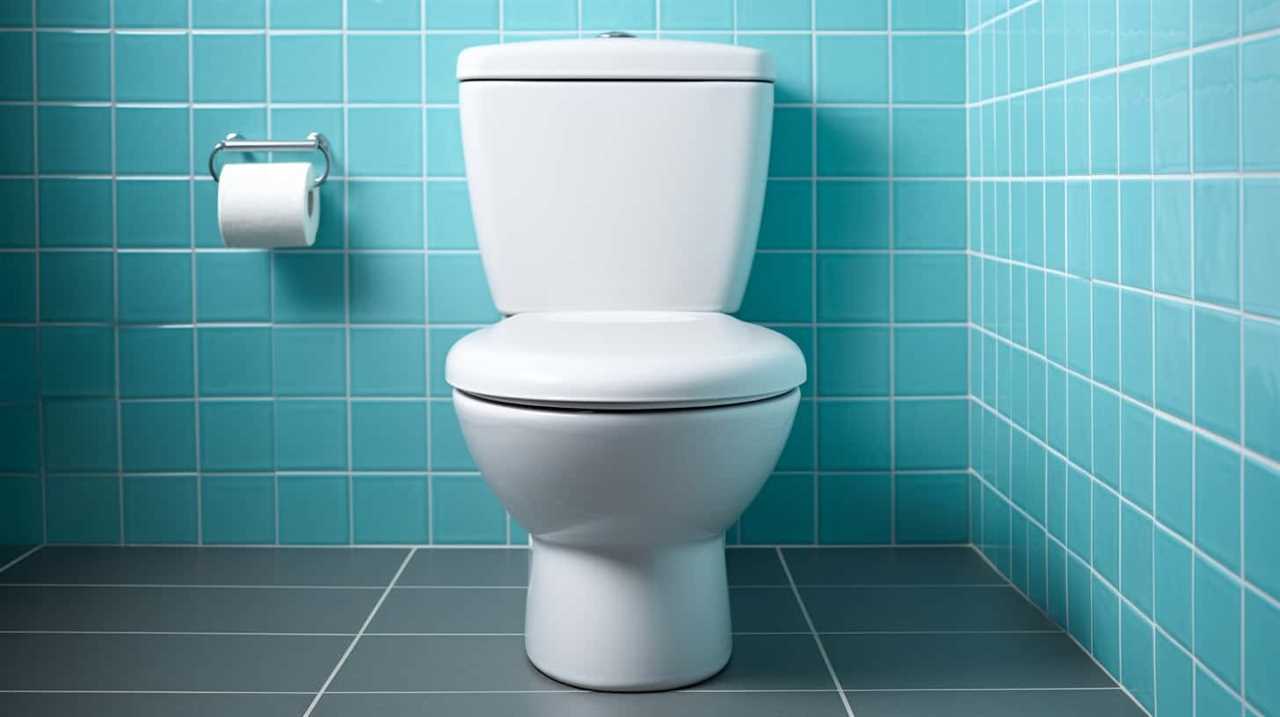
These options include dual-flush toilets, pressure-assisted toilets, and gravity-fed toilets with advanced flushing mechanisms. Dual-flush toilets allow users to choose between a lower flush for liquid waste and a higher flush for solid waste, optimizing water usage.
Pressure-assisted toilets use compressed air to forcefully push waste down the drain, ensuring efficient flushing with minimal water.
Gravity-fed toilets with advanced flushing mechanisms use innovative designs to maximize flushing power while using less water.
These water-saving toilet options aren’t only compliant with California regulations but also contribute to water conservation efforts.
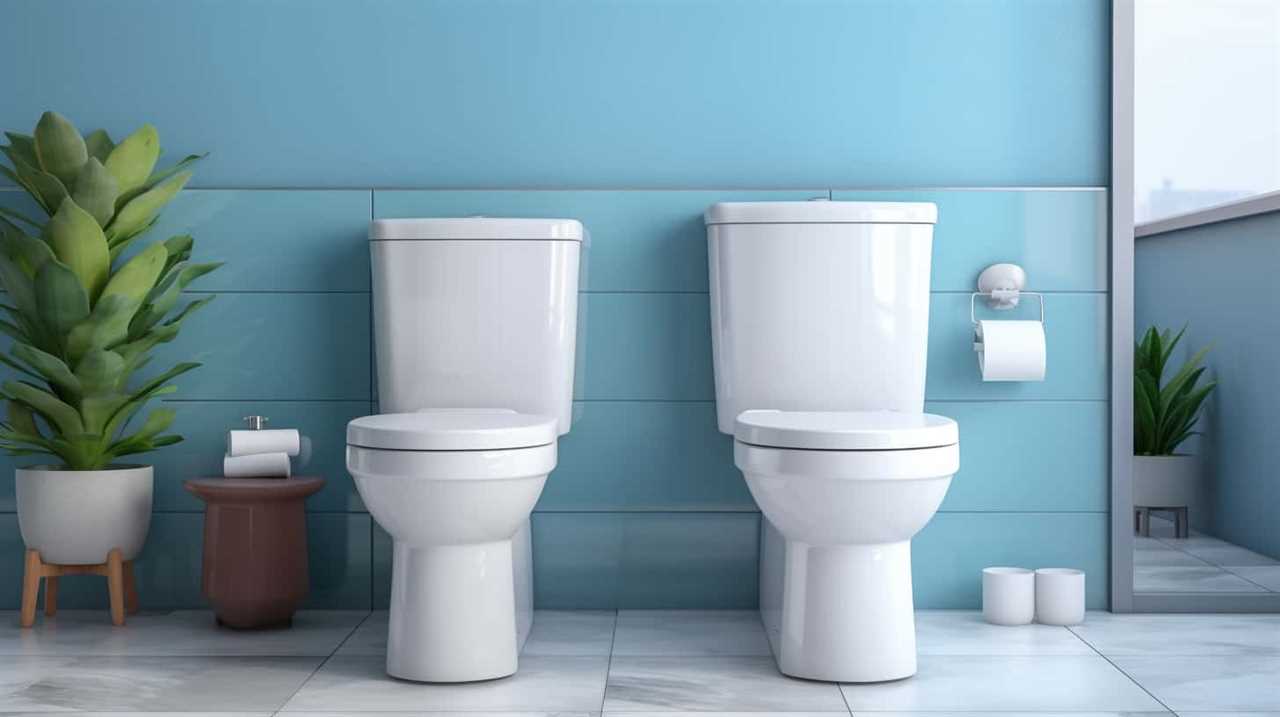
Benefits of Low-Flow Toilets?
We appreciate the benefits of low-flow toilets, such as their water-saving capabilities and their compliance with California’s 1.6 Gpf regulations. Here are the advantages of using low-flow toilets:
- Water conservation: Low-flow toilets use significantly less water per flush compared to traditional toilets, helping to conserve water resources. This is important in areas with water scarcity or drought conditions, like California.
- Environmental impact: By reducing water consumption, low-flow toilets contribute to a more sustainable and eco-friendly lifestyle. They help to conserve energy and reduce the strain on water treatment facilities, ultimately reducing the overall environmental impact.
- Cost savings: Low-flow toilets can also lead to cost savings on water bills over time. With their efficient flushing mechanisms, these toilets minimize water wastage and can result in lower utility expenses.
Alternatives to 1.6 Gpf Toilets in California
One alternative to 1.6 Gpf toilets in California is the use of composting toilets.
Composting toilets are a water-saving option that allows for the decomposition of human waste through natural processes. These toilets use little to no water, making them highly efficient in water conservation.
Composting toilets rely on aerobic bacteria to break down waste into compost, which can then be safely used as fertilizer. By eliminating the need for water to flush waste away, composting toilets significantly reduce water consumption and contribute to sustainable living.
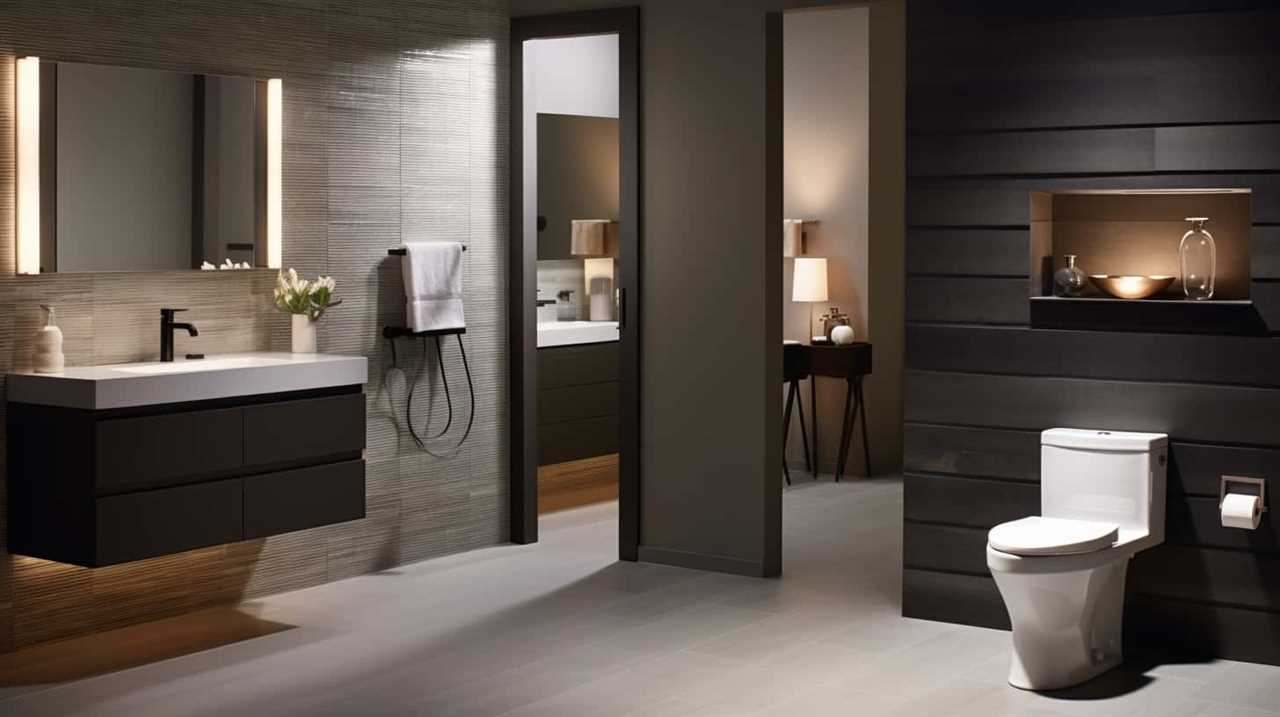
In addition to being water efficient, composting toilets also offer other benefits such as reducing the strain on septic systems, minimizing pollution of water sources, and providing a more eco-friendly alternative for waste management.
Conclusion
In conclusion, California doesn’t allow 1.6 Gpf toilets as they strive to conserve water and promote water efficiency. The state has implemented strict regulations on toilet flush volume, encouraging the use of low-flow toilets that consume less water. These guidelines have evolved over time as part of the state’s commitment to sustainability.
Therefore, residents should consider alternatives to 1.6 Gpf toilets that meet California’s water-efficient standards. Remember, every drop counts in our journey towards a greener future.
